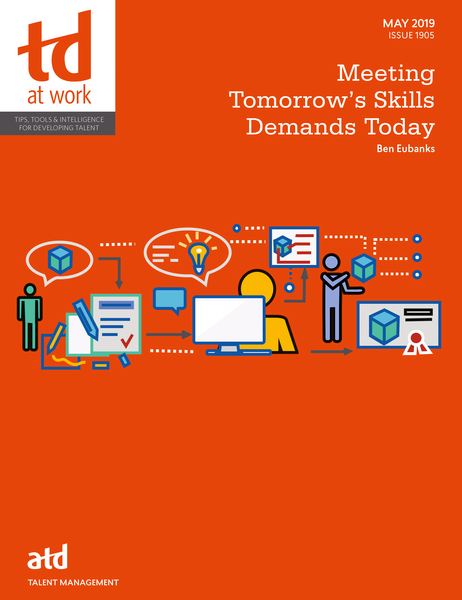TD Magazine Article
Start With a Strategic Approach to Sharpening Worker Skills
Upskill and reskill workers to reduce business disruption.
Wed May 01 2019

Upskill and reskill workers to reduce business disruption.
In today's workplace, it's no longer enough to look at two or three of your organization's key competitors, explains Ben Eubanks in "Meeting Tomorrow's Skills Demands Today." Today's competitors may come from nearly anywhere. This industry convergence is just one of many trends disrupting business.
To address disruptions, employers are increasingly leveraging their people as a strategic differentiator— which means people need to keep their skills sharp. Key to this are upskilling— the development of additional skills to make an employee more valuable in his current job, and reskilling— the development of different skills to make a worker suitable for a different role.
L&D professionals need to take a strategic approach to upskilling and reskilling.
Skills identification. Getting clear on what each worker brings to the table will help you identify which individuals to prioritize for reskilling if their skills are going to be obsolete or upskilling if workers have relatively small gaps between their position's current and future needs.
Cost avoidance. Training a current employee is often more cost-effective than hiring from the outside. If you're able to determine this dollar figure, use it as a selling point to the C-suite for training and skilling employees.
Business readiness. L&D practitioners can work with the sales and operations teams to determine the skills the organization needs to deliver the goods and services customers want.
These tips were adapted from the May 2019 issue of TD at Work.
